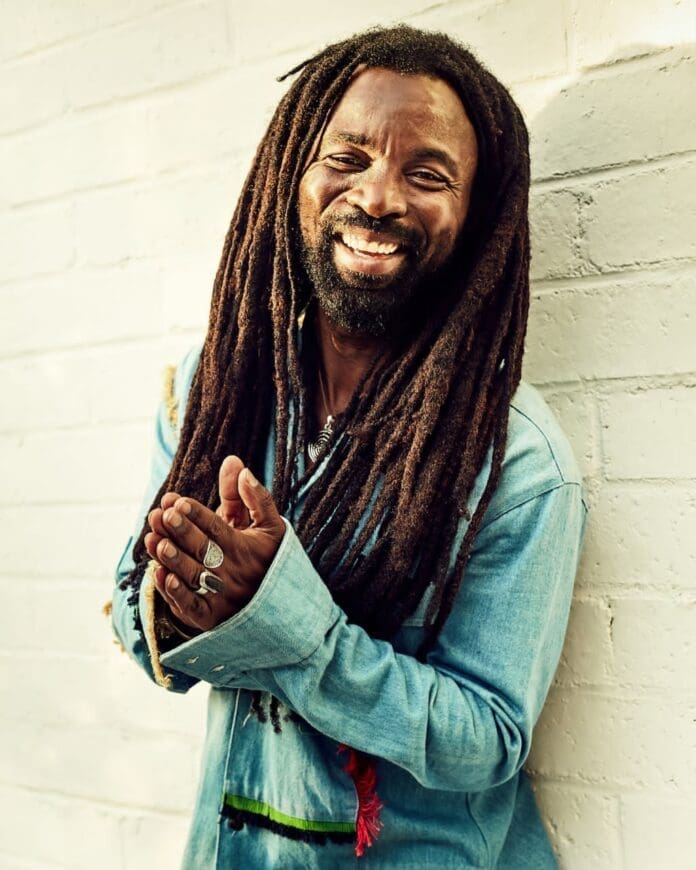Three generations of Ghanaian musical excellence will share one stage November 7 when Rocky Dawuni, Gyedu-Blay Ambolley, and Okyeame Kwame headline a fundraising concert for the Pan African Heritage Museum at Accra International Conference Centre.
The concert brings together a Grammy-nominated Afro-roots pioneer, the godfather of hiplife who pioneered incorporating rap into highlife music, and one of Ghana’s most cerebral hip-hop artists. It’s the kind of lineup that rarely happens outside major festivals, assembled here for a purpose beyond entertainment.
The Pan African Heritage Museum project aims to create Africa’s largest heritage institution, designed to assemble, preserve, exhibit, and celebrate what organizers describe as the missing and distorted history, culture, and civilizations of Africa. The museum will be housed in a five-story building on a hilly plateau 43 kilometers from Accra, featuring an architectural design that blends traditional African culture with 21st-century innovation.
Rocky Dawuni, whose fusion of reggae, Afrobeat, and highlife has earned him three Grammy nominations, brings international credibility to the fundraiser. His music has always carried Pan-African themes, making him a natural ambassador for a project celebrating continental heritage. Over his career, he’s proven that Ghanaian artists can compete on global stages while maintaining authentic cultural roots.
Gyedu-Blay Ambolley represents living history. The highlife legend created the musical genre Simigwa in the 1970s, becoming the first musician from Ghana to formally incorporate rap forms into local highlife rhythms. That innovation, captured in his seminal 1973 track “Simigwa-Do,” earned him recognition as the godfather of hiplife decades before the genre became mainstream. At 77, he remains active, a testament to both his durability and the enduring appeal of his musical innovations.
Okyeame Kwame brings a different perspective. Known as the “Rap Doctor” for his intellectual approach to hip-hop, he’s built a career on elevating Ghanaian music through technical excellence and cultural consciousness. His presence on the bill bridges the gap between Ghana’s musical heritage and its contemporary expression.
The fundraising need is substantial. The museum complex requires significant capital to complete, with funding coming primarily through donations and grants. The project has been in development for years, with a digital version already available online, but the physical structure represents a far more ambitious undertaking.
Whether a single concert can generate meaningful funding for a project of this scale is an open question. Heritage museums require ongoing financial support, not just construction capital. The Smithsonian’s National Museum of African American History and Culture, for comparison, required hundreds of millions in federal funding and private donations. Ghana’s economic realities and philanthropic culture differ significantly from the United States, making large-scale museum financing particularly challenging.
Still, the concert serves purposes beyond immediate fundraising. It raises awareness about the museum project among Ghanaians who might not know about it. It demonstrates that prominent artists support the vision. And it creates a cultural moment that reinforces the museum’s core message about celebrating African heritage.
The timing matters too. Ghana has positioned itself as a center for Pan-African cultural tourism, particularly since the Year of Return initiative in 2019 brought thousands of diaspora visitors to the country. A major heritage museum could become a significant tourist attraction, generating economic activity while serving its educational mission.
For the three headliners, participating in this fundraiser aligns with their respective artistic identities. All three have built careers that engage with Ghanaian culture and African identity, not just as marketing but as core artistic concerns. Their willingness to lend their star power to the project suggests genuine belief in its importance.
The organizers describe it as “The Musical Concert of the Year,” though that’s the kind of promotional language every concert uses. What makes this event potentially significant isn’t the hyperbole but the convergence of musical legends around a cultural project with genuine historical importance.
Whether the Pan African Heritage Museum ultimately gets built depends on far more than one concert. It requires sustained funding, effective project management, political support, and cultural institutions capable of maintaining a world-class museum over decades. Those are considerable challenges that music alone can’t solve.
But cultural projects need champions, and they need moments that capture public imagination. A concert featuring Rocky Dawuni, Gyedu-Blay Ambolley, and Okyeame Kwame creates that kind of moment. Whether it translates into sustained support for the museum project remains to be seen, but it’s the kind of cultural event that reminds people why preserving and celebrating African heritage matters in the first place.
For music fans, the November 7 concert offers a rare opportunity to experience three distinct generations and styles of Ghanaian musical excellence on one stage. For the Pan African Heritage Museum, it represents another step in the long journey from architectural vision to completed institution. Whether that journey reaches its destination depends on many factors, but concerts like this one help keep the vision alive.
Source: newsghana.com.gh











